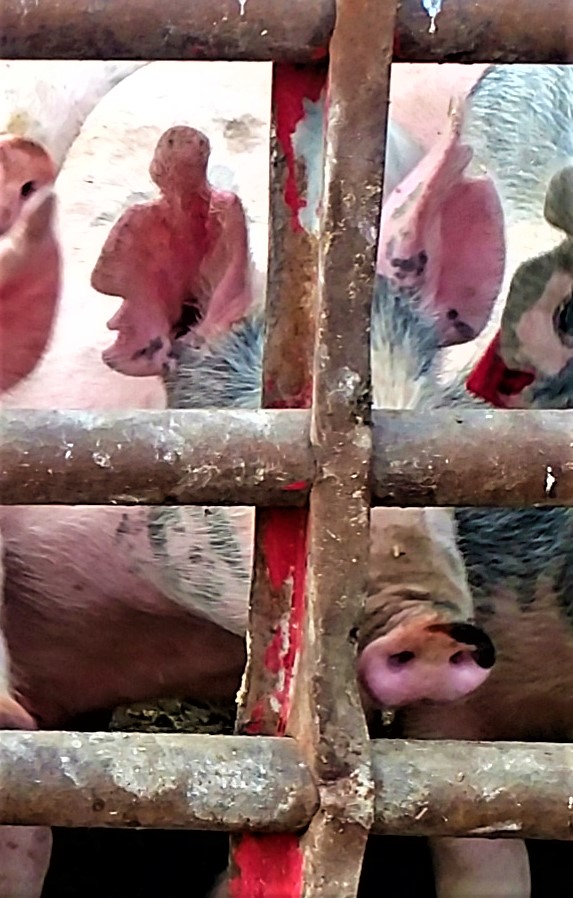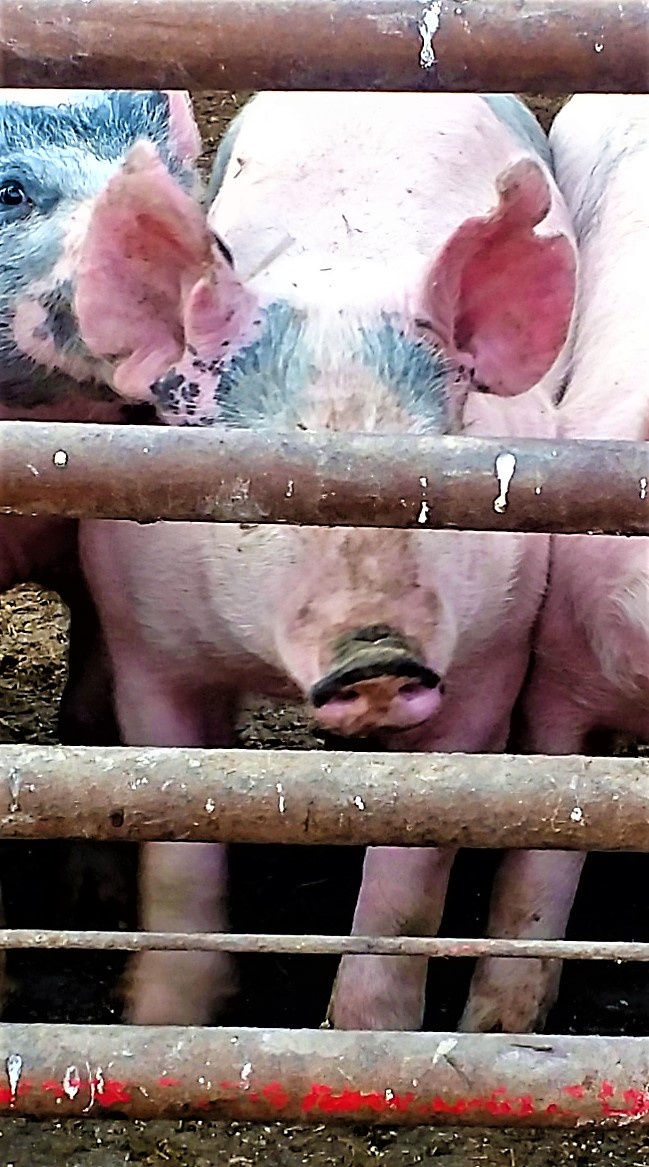Pig Identification
This pig has an ear tag in his right ear along with his notches.
We try to raise two groups, each with about 20 pigs in it per year. We sell all of our pigs directly to consumers unless we happen to have an extra one we couldn't sell. We buy our pigs from Michigan State University and usually don't have any of them get sick. If we do need to treat one though, it's important to be able to tell that one apart from his friends so we know who to keep an eye on!
Ear Tags
Pig identification is important because a group of pigs can be nearly identical and without a way to tell them apart it would be impossible to keep them all straight. One way you can identify pigs is to put tags in their ears like we do with cattle. Depending on the type of tag and the type of ear the pig has this method can work fairly well. The biggest problem ear tags create is that a pig's ears never stop growing so you may have to replace the tag during their lifetime, especially if they are breeding stock. To have a pig permanently identified, producers have come up with another system.
Ear Notches
This pig is the 6th pig from the 14th litter.
Ear notches are exactly as they sound, notches (in a triangle shape) taken out of a pig's ear. This process is done when the pigs are only a few days old with a specialized tool to minimize pain and trauma to the piglet. You can equate the process to piercing your ears, it hurts for a moment but once it's done it never has to be done again.
Notches would be essentially useless if there wasn't a universal system for identifying what each notch meant. First, you have to know what each ear means. The pig's right ear is their litter number ear. This means that each pig in that litter will have the exact some notches on their right ear. How the farmer number's the litter is completely up to him/her but each pig in that litter will have identical right ears. The pig's left ear is their personal identification number. These numbers together create a unique identification number that only that pig will have.
Notch Numbers
Now, the easiest way to explain what number is assigned to each notch is with a picture so here is a lovely picture showing what each part of the ear is numbered:
Picture courtesy of the Nebraska Extension website.
It's important to keep in mind that you can have more than one notch in each spot for example: if the pig's number was "2" you would have two notches in the number "1" spot of the left ear.
Reading Ear Notches
The litter number of this pig is 28 and his individual number is 12. So from litter 28 he was the 12th pig.
This is the tricky part, reading the notches and being able to identify a pig quickly. It does take a lot of practice to accomplish this feat but it can be done. Though the numbers assigned to the notches seem weird they do make sense once you start adding everything up so with a bit of practice the math isn't even that strenuous.
Truthfully, neither of us can read ear notches with any efficiency or accuracy but they do make a great method of identification! We don't keep our pigs around long enough nor do we raise big enough groups for us to get good at reading ear notches at a glance. If we need to identify a pig we often will catch it and put an ear tag in it because we only have them for 4 months so we aren't in any danger of the ear tag falling out because the hole got too big. We do find it amazing how an entire industry came together years ago to decide on this universal system to make everyone's life a little bit easier in the long run. We can't help thinking that if more people did that today, there'd be a little more good in the world and a little less bad!




